Fukushima’s reactors cleanup still has a long way to go

Four decades or even more may be needed for the removal of nuclear fuel from the facility
Four decades or even more may be needed for the removal of nuclear fuel from the facility
The Fukushima Daiichi power plant suffered a triple meltdown after the March 11th, 2011 tsunami that killed almost 19,000 people along the north-east coast of Japan. The disaster forced 160,000 people to flee their homes, 100,000 of whom are still displaced because of the high levels of radiation in the area.
The big challenge (and one the nuclear industry has never faced before) is the removal of hundreds of tons of melted fuel from the plant’s stricken reactors, as the tsunami knocked out the plant’s cooling system. The project has an estimated cost of almost $20bn. In late 2014, arguably the most dangerous task was completed, with the removal of hundreds of spent fuel rods from a storage pool inside a damaged reactor building. But work on removing the melted fuel has barely begun. Engineers estimate that 30-40 years is an achievable target for this process and removal will possibly begin in 2021. Environmentalists, however, argue that it is unlikely to happen since the exact locations of the fuel are still not well-defined.
Water contamination
Water is constantly directed into the reactors’ basements to prevent the fuel inside from heating up, a method that proved to be effective but created enormous quantities of contaminated water. This water is then pumped out and stored in tanks that cover large areas of the Fukushima Daiichi site. Tepco (Tokyo Electric Power Company) is able to remove 62 radionuclides from contaminated water – but not tritium – and has so far been unable to get permission from local fishermen to release the treated water into the Pacific Ocean. The site is nearing its current water storage capacity of 850,000 tons, and there are plans to add to the existing 1,000 tanks, bringing the amount of contaminated water at the plant close to one million tons. Tepco expects to have collected and treated all contaminated water pooled around the reactors by 2020, and will need to continue processing only coolant water for the reactors.
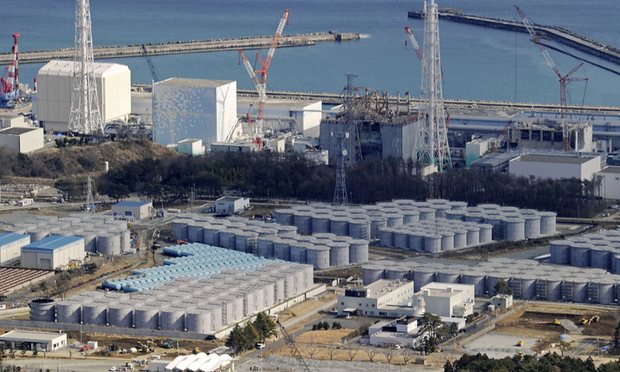
The 1,000 tanks built for the storage of contaminated water from Fukushima’s damaged reactors are nearing capacity. Photograph: AP
Soil contamination
Local authorities continue the decontamination of the surrounding areas, collecting soil and other low level radioactive waste in more than 10 million black bags. Even though 26000 workers are involved in this cleanup, there are still more than 40 communities to be decontaminated.
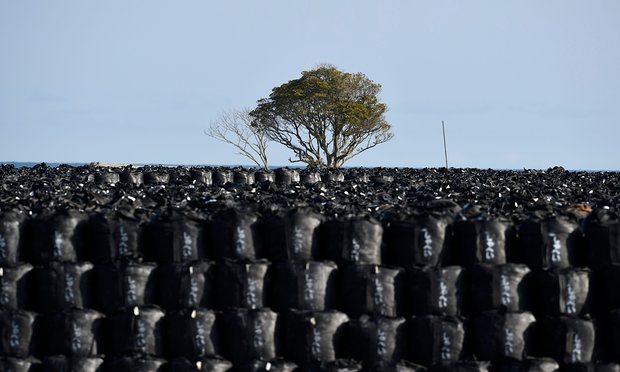
Thousands of large black plastic bags containing radioactive soil and debris removed from towns and villages near the Fukushima nuclear power plant. Photograph: Franck Robichon/EPA
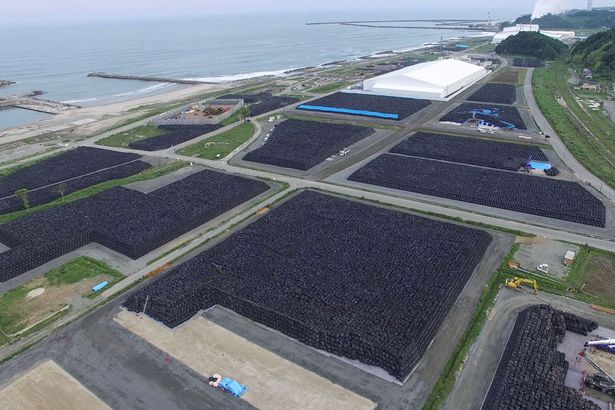
To save space, the soil bags are stacked in layers on top of each other.Photograph:Arkadiusz Podniesinski/REX
Source: The guardian
Source: The guardian
Want to read more like this story?
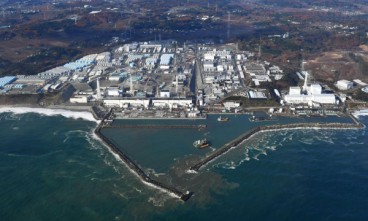
Japan plans to release radioactive water into the Pacific Ocean
Sep, 10, 2019 | NewsAccording to Japan's Environmental Minister, Yoshiaki Harada, tons of radioactive water deriving fro...
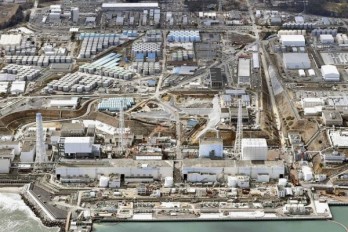
Japan concerned over Fukushima coolant water disposal
Apr, 10, 2015 | NewsTokyo Electric Power (Tepco), operator of the Fukushima nuclear plant, is currently flushing water t...

March 22nd is World Water Day!
Mar, 22, 2015 | NewsSince 1993, the United Nations has designated March 22nd of each year as World Water Day, a day dedi...
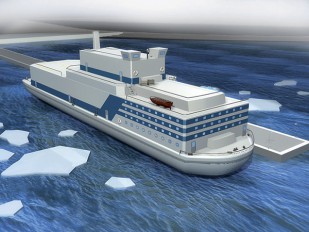
First-ever floating nuclear power plant is under construction in Russia
Oct, 19, 2016 | NewsThe plant is set to start providing power and heat to the country’s remote northern regions by...

Ancient engineering methods to address water shortages
Jul, 31, 2019 | NewsAccording to a new study, published in Nature Journal, a 1,400-year-old system of canals that divert...

An assessment of the Chernobyl disaster 38 years after it happened
Apr, 26, 1986 | NewsSaturday, April 26, 1986, 01:23:45 AM local time. A terrifying accident was taking place in the nor...

Researchers have developed a miniaturized water quality sensor that can monitor drinking water quality in real time
Oct, 03, 2017 | NewsThis tiny and inexpensive device -built using a 3D printer- can be deployed anywhere in the water di...

SuntoWater generators produce 150-400L of potable water per day out of thin air
Mar, 06, 2017 | NewsThey can be powered by solar or solar plus grid power They can be powered by solar or solar plus...

Thames Water Accelerates Plans to Secure South East's Future Water Supply
Jun, 07, 2024 | NewsToday marks a significant step in securing the future water supply for the South East as Thames Wat...
Trending

Vertical gardens in Mexico City to combat pollution

Saudi Park Closed After 360 Big Pendulum Ride Crashes to Ground, 23 injured

Characteristics of Load Bearing Masonry Construction

Taipei 101’s impressive tuned mass damper

Dutch greenhouses have revolutionized modern farming

Federal court rules Biden’s offshore drilling ban unlawful


